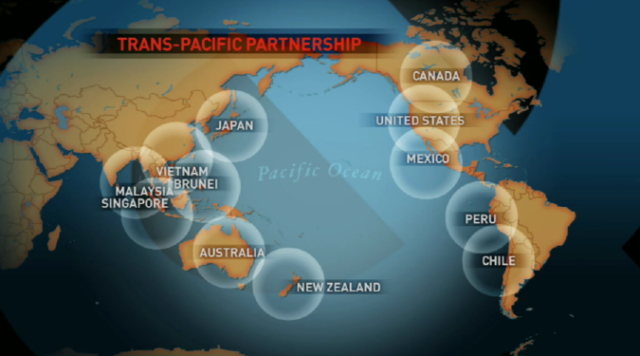The Trans Pacific Partnership is an economic blessing or a curse depending on who you ask. Here’s a breakdown of the players involved and why the deal is causing so much controversy.
CCTV America’s Rachelle Akuffo filed this report from Washington.
Follow Rachelle Akuffo on Twitter @RachelleAkuffo

Highlights:
- The Trans-Pacific Partnership is a deal being considered by 12 countries that border the Pacific Ocean. It was first proposed in 2006. The United States and 11 Pacific Rim countries are currently in talks to join the TPP. The list includes Australia, Brunei, Canada, Chile, Malaysia, Mexico, New Zealand, Peru, Singapore, Vietnam and Japan.
- A government website says the agreement will make it easier for U.S. goods and services to be sold in the fastest growing markets in the world. That will– in turn– create more jobs and boost growth.
- Labor unions and some democratic lawmakers say the TPP will devastate the U.S. labor force. Opponents say the agreement will allow corporations to get greater access to cheaper labor-which eventually lead to massive layoffs in the U.S.
TPP could change the dynamics of trade ties in the Asia-Pacific
American and Japanese leaders have agreed to work toward a quick and successful conclusion to the negotiations for a trade pact known as the Trans-Pacific Partnership.
This 12 nation arrangement could change the dynamics of trade ties in the Asia-Pacific.
CCTV’s Daniel Ryntjes filed this report.

TPP could change the dynamics of trade ties in the Asia-Pacific
American and Japanese leaders have agreed to work toward a quick and successful conclusion to the negotiations for a trade pact known as the Trans-Pacific Partnership. This 12 nation arrangement could change the dynamics of trade ties in the Asia-Pacific. CCTV's Daniel Ryntjes filed this report.Charles Freeman on the Trans-Pacific Partnership
For more on the implications of the TPP, CCTV spoke to Charles Freeman, International Principal at Forbes-Tate. He’s also the Former Assistant U.S. Trade Representative for China Affairs.

 CGTN America
CGTN America Countries involved with the TPP.
Countries involved with the TPP.
